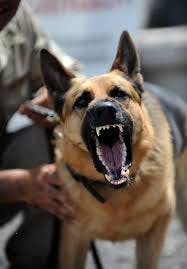Movies and cartoons often portray hostile relationships between cats and dogs, but in reality, cat-dog fights are not that common. Rather, brawls between cats or between dogs happen much more frequently. In particular, male pups from 6 months to 3 years old are more prone to fights. How can you put a stop to a fight, or better yet, prevent them from happening altogether?
Q: What types of fighting are there?
A: You can categorize fighting amongst dogs into 2 types: At home, and outside.
Q: Why might dogs in the same household fight?
A: Fights are most likely to break out in a home with more than one dog of the same sex. The cause is usually possessiveness over food, toys, or other resources.

Q: Why might dogs fight with other dogs outside?
- When you’re going for walks, the change of environment or being somewhere new can over-excite your furry friend, which could lead to feelings of aggression.
- Change in environment could also cause your pup to feel anxious, similarly leading to aggressive behavior.
- If your dog mistakenly believes another person or animal is threatening you, they may attack to protect you.
Q: How should you stop a fight?
If nothing else, remember this: Never try to break up a brawl by yelling or pulling on your pup’s leash! By doing so, your dog may become even more agitated.
Here are a few effective methods to stop aggressive behavior:
- Quickly grab your dog by their behind or back legs and pull them away (Never grab their head or neck – you’ll get bitten).
- Push against your dog’s side with one of your legs and guide them away. You’re not kicking them, but rather using your body weight and leg to move them.
- Spray the warring pups with water or separate them using a large object.
- Divert their attention. A dog’s attention span is notoriously short, so catch their attention with a snack or a sound so they’ll forget all about their rival.

Q: How can you prevent a fight?
A: Learn to read your doggo’s body language
1. Watch their tails:
- Your dog’s behind moves along with a wagging tail = Happy
- A tail raised high and unmoving = Alert
- A tail raised high and slowly wagging = Nervous
2. For breeds with short tails, such as Corgis or Rottweilers, you may have to pick up signals from body parts other than the tail: Hair standing up on back, ears pressed flat against the head, stiffening of the body are all signs of an agitated canine that is ready to fight.
Friction can also happen between dogs with a big age gap. A 4-month-old puppy is boisterous and playful, and you can easily imagine an older dog losing patience with the young one’s excessive energy.
Q: Should your dog see an animal behavior expert?
A: It’s normal for occasional fights to break out, and pet parents can help resolve the disagreement at hand through keen observation and effective management. For example, if you notice that your doggo gets agitated every time they are in a particular place, avoid taking them there. However, if you don’t feel like you are making any progress with correcting your dog’s aggression, then the best way may be to consult an expert.
Dog fights can be ferocious and scary, but having other canine friends to play with at home or at the park is important to a doggo’s emotional health. In the process of learning how to get along with other dogs, your pup could get injured. Be prepared for the inevitable accidents with pet insurance.
Pawfect Care pet insurance accepts all dog breeds and reimburses up to 90% of vet bills. It offer comprehensive coverage for when your beloved pets need medical attention, both injuries and illnesses. For more details, check out here!
